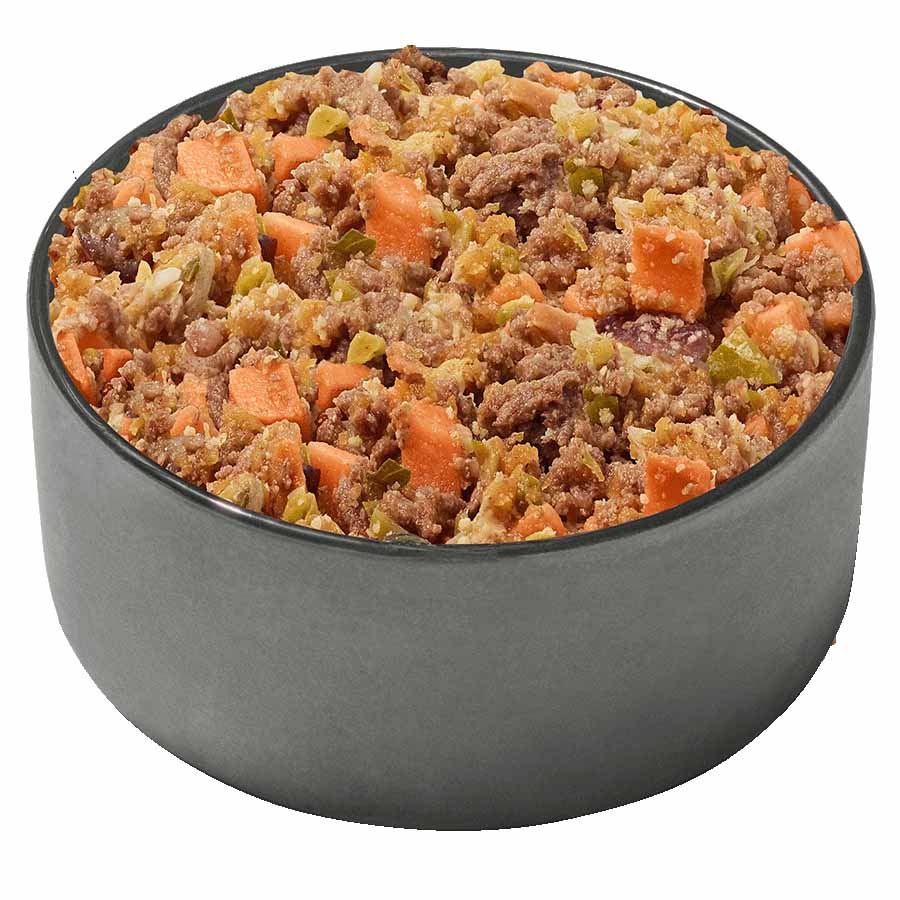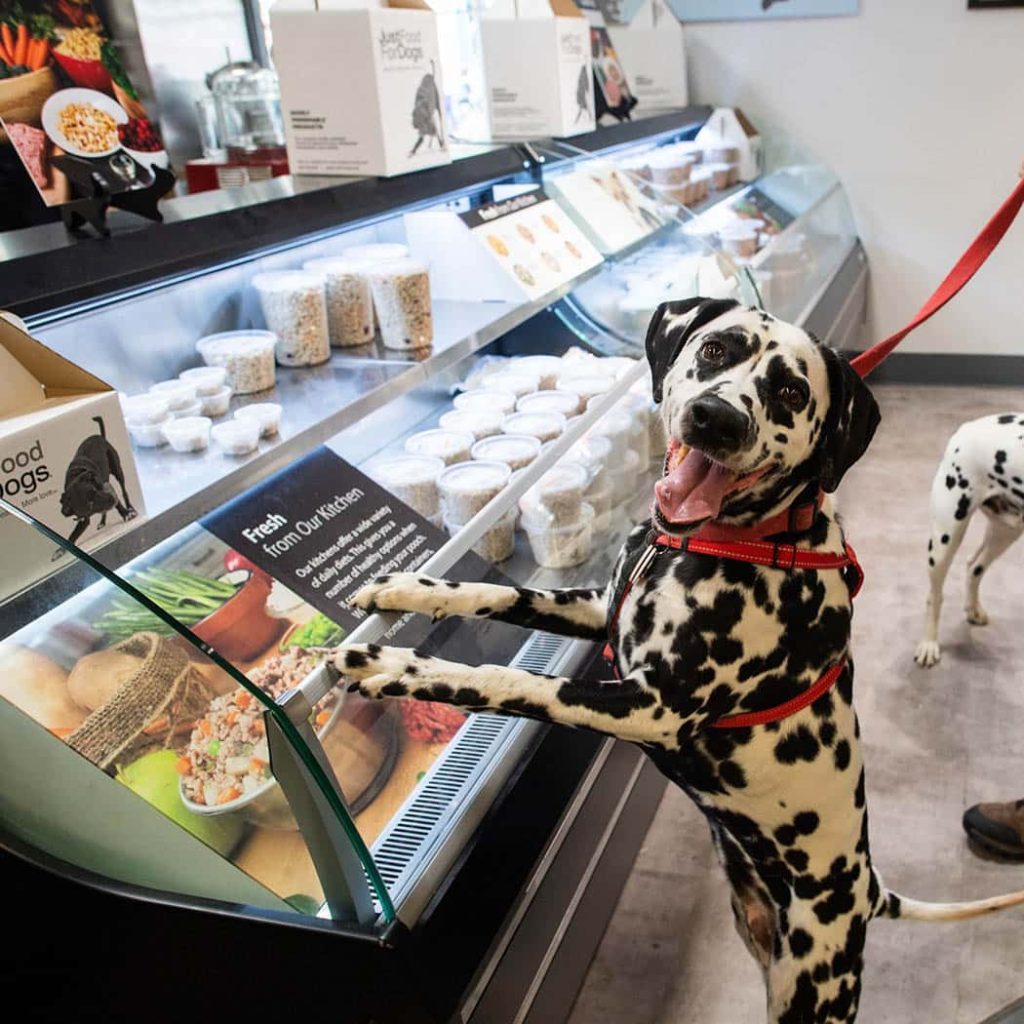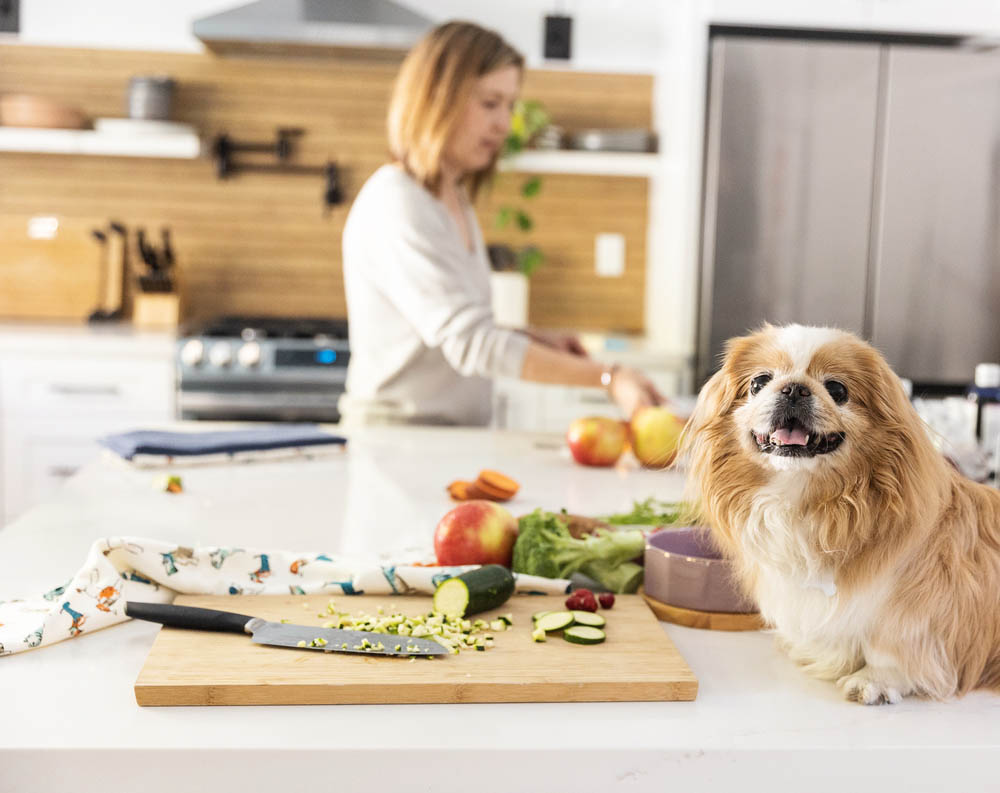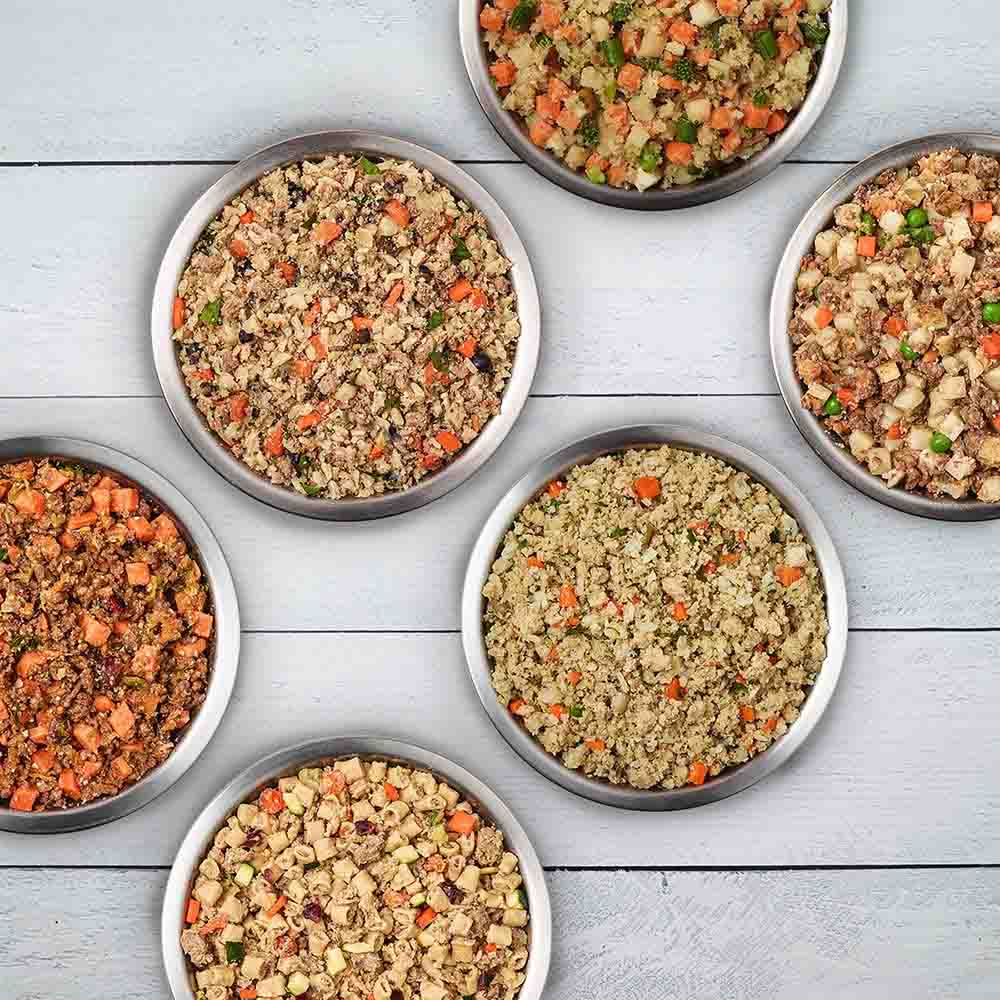When you eat well, you feel well. It’s the same for your dog. Bright eyes, a gleaming coat, and a wagging tail are outward signs of canine happiness and nourishment.
You probably know healthy, whole foods offer your pup the nutrition he needs to look and feel his best. That’s why you’re researching pet food. Yet, there are so many brands of dog food available. Which one is right for your floof?
Maybe your dog shows signs of food allergies or sensitivities. If so, you might search for a grain-free healthy dog food or one with a novel protein for a limited-ingredient diet. Or, maybe you want a preservative-free dog food to limit your dog’s exposure to artificial preservatives.
You might wonder:
- What are the primary benefits of preservative-free dog food?
- Does a preservative-free pet food make it easier to feed a limited-ingredient diet?
- Is natural dog food and preservative dog food the same thing?
- Can I make my own nutritionally balanced and preservative-free pet food at home?
- Is there scientific evidence this is better for my dog?
- What kind of pet food is best for my dog at different life stages?
Before we jump into answering those valid questions, let’s look into what defines a healthy diet.
What’s a Healthy Diet for Your Dog?

Pet owners often ask, “What’s the best dog food?” Yet, there’s no one-size-fits-all. Some dogs do best on high-protein diets, while others need low protein. The right food depends on your dog’s age, breed, activity level, and health.
Nutritional research shows a healthy pet diet includes whole food ingredients such as protein, carbohydrates, omega-3 fatty acids, fiber, essential vitamins, and minerals. Your dog’s age, size, breed, and activity levels determine how much of each they need. This is why it’s important to ensure you’re feeding the right amount and right balance of high-quality food at all stages of your dog’s life.
Additionally, the Association of American Feed Control Officials (AAFCO) offers guidelines for pet food and dog treats. They’re behind the “Nutrition Adequacy Statement” on pet food packaging that helps pet parents decipher confusing pet food labels.
For example, is preservative-free dog food healthier for your pet? What does preservative-free mean anyway?
What Is Preservative Free Dog Food?
Think of the standard dry dog food on store shelves. Because it sits on the shelf for a long time, it includes artificial preservatives to keep the kibble fresh.
At the same time, artificial preservatives like BHA (Butylated Hydroxyanisole), BHT (Butylated Hydroxytoluene), Ethoxyquin, and others have mixed results. Some studies link these to cancers, while ethoxyquin is a known pesticide.
Dry dog food is convenient, but may sometimes be less nutritious than eating high-quality, whole foods.
Imagine eating nothing but boxed cereal vs. a balanced diet of real food. For example, take a chicken adult dry dog food. The ingredients include chicken and chicken meal, which is dehydrated chicken ground into a powder. Then, you might find unnecessary byproducts, which include ground chicken feet, organs, and other bits.
Then there’s fresh, preservative-free dog food often made with USDA human-grade ingredients. Organic chicken, blueberries, sweet potatoes, and brown rice make for tasty and nutritious meals. A simple chicken recipe can include rice and veggies, which makes for an antioxidant-packed dinner. Doesn’t it sound tastier?
For many dogs, a few weeks of fresh, preservative-free dog food makes a noticeable difference in their coat, skin, and energy levels.
Benefits of Preservative Free Dog Food

Artificial flavors and preservatives are a big part of commercial dog food brands like Purina and Diamond Naturals. Preservative-free dog food and cat food offers your pet a meal made of real meat and often includes probiotics. Probiotics are healthy bacteria that support your dog’s digestive system.
Preservative-free dog food is easier to digest because they’re minimally processed, so your dog reaps the nutritional benefits.
There are no unnecessary fillers or additives. Plus, such natural dog food looks, tastes, and smells better than dry dog food. So if you have a picky eater, they’re bound to gobble up the real food.
Easier to Feed a Limited Ingredient Diet
If your pup shows symptoms of gastrointestinal issues or other potential food sensitivities, your veterinarian may recommend a limited-ingredient diet. By paring your dog’s diet to a few ingredients, you can see how they affect your pup. Then, you can slowly add items to find the culprit causing your dog’s distress.
A preservative-free diet made of whole foods is an excellent way to feed your dog a healthy, nutritious, limited-ingredient diet. You can choose venison mixed with brown rice and veggies and other real foods in a healthy wet dog food your dog will love.
Are There Drawbacks to Preservative-Free Dog Food?
The primary drawbacks of fresh, preservative-free dog food include a shorter shelf life. Thanks to the minimal processing and lack of additives, this is food that needs refrigeration and should be eaten within a few days.
It can be more expensive than kibble, but not necessarily through DIY options. However, it’s better for your pet and may result in better health, which can reduce veterinarian bills.
There are also shelf-stable options of preservative-free dog food that only require refrigeration once opened. They come in an array of flavors and even joint and skin support.
Can I Make My Own Nutritionally Balanced and Preservative-Free Pet Food at Home?

Unless you’re a nutritionist, you’ll need guidance, but it is possible. By shopping around for ingredients, making in bulk, and following these steps, you can create your own preservative-free pet food at home with balanced nutrition.
A quick word on raw dog food and natural dog food because if you’re exploring pet food nutrition, you’ll run into these discussions.
Raw food is raw feeding, just like it sounds. Proponents of this diet feed their dogs raw meat and veggies, but obviously, raw animal protein carries a high risk of bacteria like salmonella and Listeria monocytogenes. You have to be especially careful to avoid cross contamination; plus, your dog may not do well on the raw diet.
Natural dog food often overlaps with preservative-free dog food. The biggest difference is that natural dog food uses natural preservatives like Vitamin E and Ascorbic Acid (Vitamin C.) However, preservative-free food often includes superfoods like blueberries, which are natural sources of Vitamins E and C.
Is There Science-Based Evidence That a Fresh Diet Is Healthier for My Dog?
With the first canine nutrition center and the only fresh pet food company to have commissioned a university study on digestibility, the answer is “yes.”
The research found that pets who eat fresh, human-grade food produce up to 66% less poop than those who eat kibble. As you know, kibble, even premium kibble like Blue Buffalo or Wellness dog food brands, is still highly processed and incorporates waste ingredients.
Dr. John Tegzes, VMD, Diplomat American Board of Veterinary Toxicology from Western University of Health Sciences discusses why preservatives are used and what we know and don’t know about their effects over time in both dogs and humans.
Don’t Follow the Trends
…before talking to a veterinary professional first. A casual glance at any pet food aisle or a site like Chewy or Amazon, you’ll see plenty of trendy pet foods. For example, does your dog need grain-free dog food, or is that simply brands piggybacking on the human diet trends of Keto and grain-free eating?
There’s nothing inherently wrong with whole grains. The same with gluten. It’s trendy to opt for grain-free and gluten-free foods, but whole grains and gluten are fine for most pets (and people.)
Good nutrition is as timeless as a classic black dress. Apply your nutrition lens to your pup’s life stage and feed quality ingredients for their health.
Now, if your dog has chronic tummy or skin troubles, it makes sense to change his food. Try a limited-ingredient diet, something your dog hasn’t eaten recently or at all (like venison or duck), and see how your pooch responds.
Choose the Food for Your Dog’s Life Stage and Condition
Feeding the right proportions, nutrition, and frequency for your dog at different life stages is also important for your dog’s health. Take small-breed puppies; they need frequent nutrient-dense meals to support their growth. But once your pup grows into and adult dog, they no longer need puppy food in adulthood.
Whereas all overweight dogs need lower-calorie foods (and more exercise) to help them lose weight. If your dog needs a low-protein diet for renal support or other specific care, then you’ll want to choose the right food.
If your dog faces critical health issues, nutrition is more important than ever.
How to Transition Your Dog to Fresh Food
We recommend a slow transition over 5-10 days. You can start with a small amount as a topper with your dog’s current food and gradually add more fresh food and reduce the current food until your dog is completely eating the new fresh food. Go slow, especially for dogs with sensitive stomachs.
Now that you know the nourishing benefits of preservative-free pet food, which flavor profile would your dog most enjoy?
This content is for informational use only and does not replace professional nutrition and/or medical advice, diagnosis, or treatment. It is not a substitute for and should not be relied upon for specific nutrition and/or medical recommendations. Please talk with your veterinarian about any questions or concerns.
